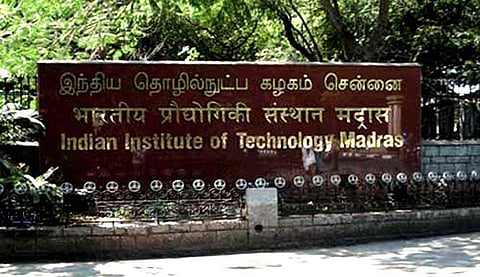

There are less than two female students among every 10 students at Indian Institute of Technology - Madras reveals data submitted by the institute to the National Institutional Ranking Framework (NIRF) for 2018-19.
These top institutions are a rather lonely place for women, with less female counterparts and lesser female role models and mentors to reach out to during times of personal distress. The data shows that only about one in 10 students at the undergraduate level are women.
While the figures marginally improve over postgraduate courses, the figure staggers at best with 18 per cent of the three-year post-graduate courses being women. That is still only two women in every ten students. Female teachers and students of the institution Express spoke to said while they do not face overt gender discrimination, the culture remains largely male-dominated. In the wake of the suicide of Fathima Latheef, a post-graduate student of the Department of Humanities, IIT - Madras, Express looked into the gender ratio at IITs and spoke to its stakeholders on how this poor gender ratio affects the everyday life of students.
In the academic year 2018-19, the percentage of women was 12.96 per cent in undergraduate courses, 12.84 per cent in the two-year post-graduate and 18.73 per cent in three-year PG course. The trends in the academic year 2016-17 were similar. The gender ratio at the PhD level for this academic year was not available. No data were available for the academic year 2017-18, despite writing to the institution.
Even as country-level gender ratio across all IITs in 2014-15 using the same source showed that only nine per cent of UG students, 19 per cent of PG students and 27 per cent of PhD students were female, only 11 per cent of faculty members were women.
Female students at IIT- Madras said while they are not at the receiving end of overt discrimination or misogynist comments, they still felt left out as the culture is largely male-dominated. "For instance, the majority of class toppers are male students. This is because problem-solving is done first at the tutorial sessions by peer-learning, then students reach out to teacher assistance and finally mentors to seek clarifications. It is easier for guys to solve a large number of problems together. Their access to top-five students is easier. This way since girls are smaller in number, it is difficult to crack that competitive social network," said a female student studying in the penultimate year of a five-year UG course at IIT-M.
She said that as time passes, female students get used to the male-dominated atmosphere in classes and 'adapt' to it. She, however, said that in departments which have a better gender ratio, this problem is lesser. "However, students have many common lectures which cut across departments. Sometimes, it helps expand their network, but mostly they get used to the poor gender ratio," she said.
Students also added that the number of female mentors or friendly-faculty members who are easily accessible is abysmally low at the institute. "It is easier to access a male faculty at the institute as opposed to female ones. Usually, female faculty members are low in a number and have a lot more to deal with because of that. Many of them also have to juggle between home and work, making them less accessible after college hours for informal discussions," said a student from the humanities department, on condition of anonymity.
